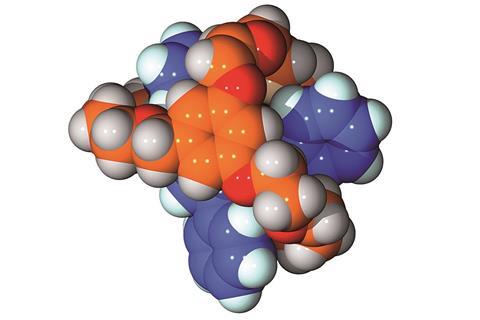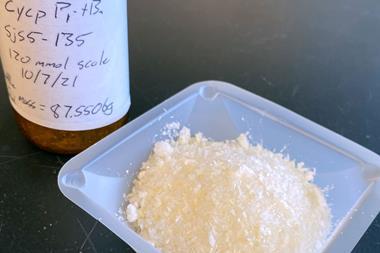A removable macrocyclic suit can protect a small cation from strong bases

Scientists have designed a macrocycle that can completely surround a small molecule like a suit and protect it from a strong base. This reversible suiting strategy could find applications as protecting groups in organic synthesis and the design of molecular machines.
Protecting groups alter the reactivity of organic molecules by shielding functional groups from other reactants. Mechanically interlocked molecules (MIMs) are linked structures that require a covalent bond to be broken to separate them, which could make them useful protecting groups.
Kelong Zhu at Sun Yat-Sen University, China, and Stephen Loeb from the University of Windsor, Canada, and their team have designed a macrocycle that can form a suit around a benzimidazolium cation and protect it from deprotonation by a strong base. The macrocycle has long side chains that can be linked link to each other via a ring closing metathesis, forming a suit-1-ane around the T-shaped cation. The benzimidazolium retains almost the same reactivity within the suit as in its free form, and the macrocycle can be removed using a catalyst.
‘Our hope is that by demonstrating that the interlocked nature of a MIM could be made reversible, others, more involved in organic synthesis, might find this concept useful as a new type of 3D protecting group,’ says Loeb.

R Dean Astumian, an expert in molecular machines at the University of Maine, US, comments: ‘As well as this “suiting” providing a flexible approach to design protecting groups based on mechanical rather than covalent bonding, I also see interesting possible applications to turning on and off catalytic sites by external actuation. The possibilities for using all of these different suit[n]anes seem almost limitless.’
Zhu’s and Loeb’s team is now looking at other applications for their reversible mechanical protection, and they are incorporating suit-1-ane into functional materials such as conductive polymers.

















No comments yet